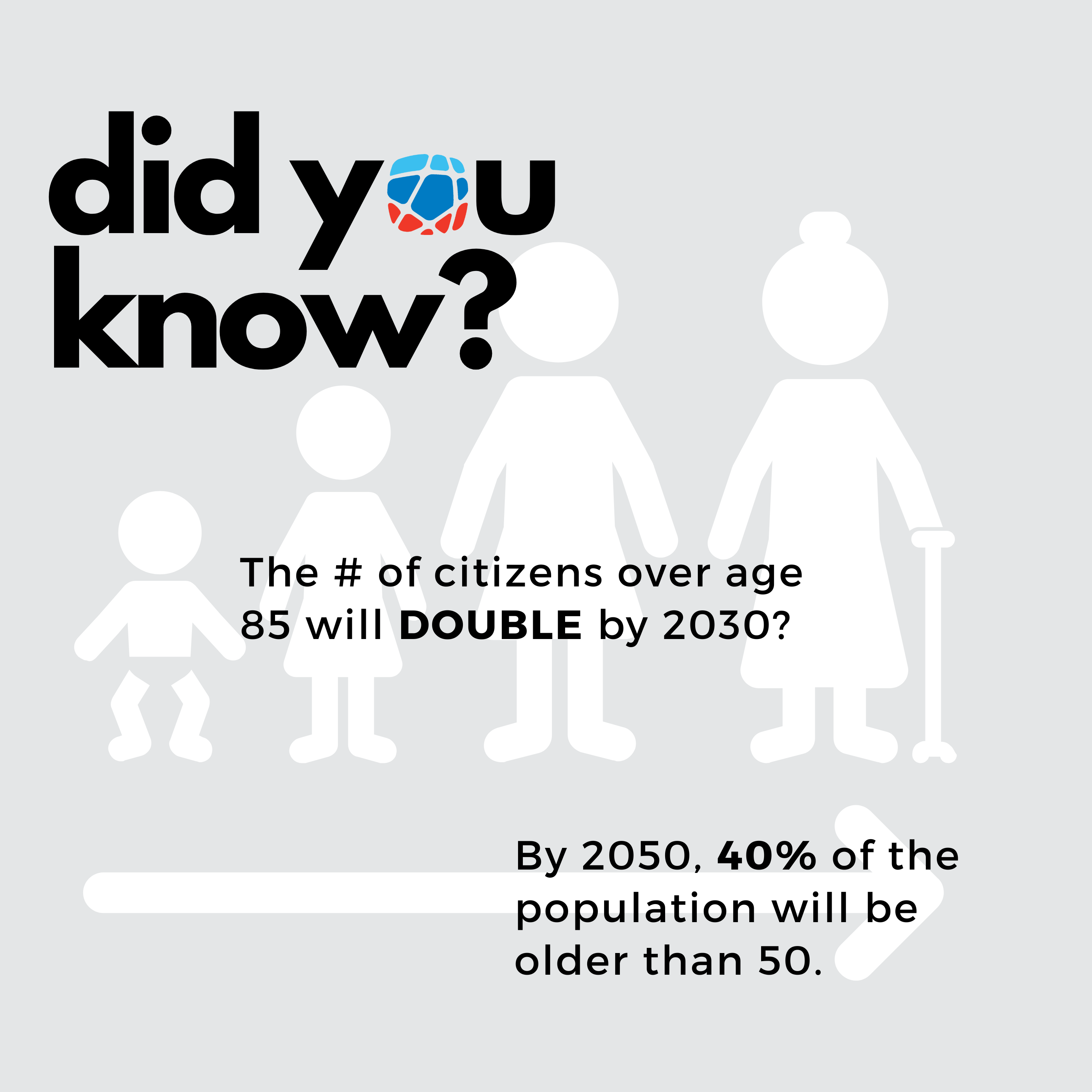
Increased life expectancy directly correlates with the number of people in the active workforce.
According to the U.S. Census, between the years 2000 and 2050, the number of older adults is projected to increase by 135%.
The population aged 85+ (which is the group most likely to need health and long-term care services) is projected to increase by 350%.
The National Council on Aging has noted that 80% of older Americans are living with at least one chronic condition and 68% have at least two. More than two-thirds of current health care costs go towards treating chronic illnesses among older Americans.
What does this mean for you and your staff? As we watch the aging workforce continue to increase, we recognize that precautions and healthy practices must be taken. With the significant increase expected in the population ages 65-84 through 2050, this projected growth in the share of the labor force poses a potential challenge for workers’ compensation. The CDC has taken notice of the “Rate vs. Severity” of injuries with older workers, and so should we. Older workers typically have lower rates of workplace injuries but those injuries, when they do occur, resulting in higher average costs.
What do we do about this? How do we prepare?
Staff Fitness. A worker’s fitness level can make a difference in the severity of these “tip of the iceberg” events.
The first step in preventing injuries due to aging is to make sure the employees have the opportunity to stay fit.
Whether you offer a reduced-rate membership to your own wellness/fitness center or negotiate a reduced rate
with a local gym, you have given your employees an option.
Fit for Duty. Some employers have written very specific position descriptions that include physical characteristics
of the job such as “must be able to walk 50 feet within 10 seconds followed by 5 minutes of CPR” or “must be
able to lift 50 pounds” or “must be able to …”. You have the right, as an employer, to make sure that all of your
employees, new or old, can do these things.
Employee Tools. Use tools designed to reduce injury and increase the safety of staff and patients during transfers.
Do an assessment of what kind of gait belts, slide boards, lifts, etc. you need. Involve your staff to do
the assessment and assist with the selection of tools. Make lifts and lifting aids available and maintain tools properly
and routinely update and replace them with improved tools.
These suggestions not only will protect your older workers from having that “tip of the iceberg” event, but also will benefit younger employees as well.
A healthy, stable workforce also creates an atmosphere conducive to patient confidence and satisfaction. Patient satisfaction can lead to increased
referrals, growth in market share, and philanthropic support from satisfied patients or their families.
The key is to have a plan, make your expectations known to your staff, and follow up with positive corrective action until everyone is following safe
practices and risk management.
To learn more about working with an aging workforce, be sure to contact our Risk Managers for on-site training, today.
[email protected]
